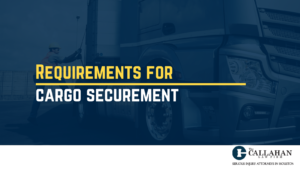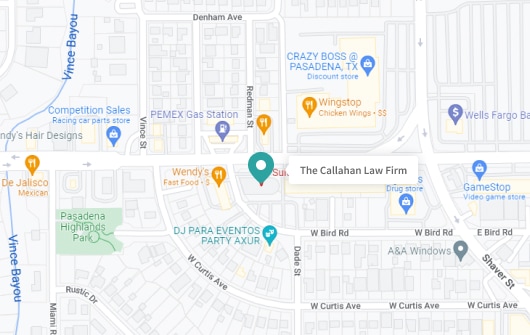Requirements for Cargo Securement

Truck drivers are not legally permitted to load up their truck with as much cargo as possible and take to the road. Rules are in place for truck load securements to ensure these massive vehicles are safe to drive and also ensure the roads remain safe for other drivers. Below, we provide a brief look at the requirements for truckers’ load securements.
Truck Cargo Securement Rules
The Federal Motor Carrier Safety Administration (FMCSA) established new rules for truck cargo securements back in September of 2002. These rules were established based upon the regulations established in the North American Cargo Securement Standard Model. Truck cargo rules extend beyond merely limiting the weight these big rigs are allowed to transport from point A to point B. The rules mandate truck drivers alter the manner in which cargo securement devices are used in order to stop items from shifting or falling during transport.
Overarching Guidelines
In general, truck cargo has to be firmly secured or immobilized within or on the truck using devices of adequate design and strength. Inadequate securement devices (e.g., a strapping system) such as those of insufficient strength will cause cargo materials to become unstable. It is also possible for truck drivers to use dunnage – loose material – that support/protect cargo and/or dunnage bags for securing loads so that they do not shift during transport. Dunnage bags are inflatable bags used to fill the space between cargo items or between the load being transported and the vehicle’s wall. Truck drivers and truck companies are also permitted to use tiedowns, shoring bars or a combination of such items to ensure their load is properly secure.
Tiedowns Must be Used in the Proper Manner
New truck regulations mandate that all tiedowns are connected and secured in a way that prevents loosening, opening, release or even slight unfastening as the truck is in transit. Tiedowns and additional cargo securement system components designed to keep loads in place on trucks must be equipped with the proper rub rails. Edge protection is also required when tiedowns are subjected to cutting or abrasion at points where they contact any piece of cargo. Such edge protection must be resistant to cutting, crushing and abrasion.It is interesting to note the rules that govern truck loads do not bar unmarked tiedown devices. However, a provision exists that states unidentified welded steel chains are considered to have a working load limit that is the same as grade 30 proof coil. Other versions of unidentified tiedowns must be considered to have a limit that equates to the lowest rating for its type within the working load limits table.
The Proper Placement of Cargo
Articles of cargo inclined to roll must be restrained with wedges, chocks, cradles or other means that prevent the cargo from rolling or shifting during transport. The items used to prevent such rolling must not be capable of loosening or becoming unfastened as the cargo is in transit. Cargo placed adjacent to one another secured through transverse tiedowns has to be positioned in direct contact with one another so they do not slide too close when the vehicle is in motion.
Involved in a Truck Accident? Help is a Call Away
If you are injured because of the negligence of a truck driver or a trucking company, you should not have to suffer in silence. Our truck accident attorneys are here to evaluate your potential claim and determine whether the truck driver or trucking company was negligent in any way, whether the truck was overloaded, cargo was not secured properly resulting in the cargo shifting or falling off the vehicle, or whether any rules, regulations or laws were violated. Many times it may not be apparent at first what caused an incident involving a truck and its load, which is why it is so important to discuss a potential claim with an experienced truck accident lawyer. Contact us today to learn more about how we can help you obtain the compensation you rightfully deserve.

Michael S Callahan is an attorney and founder of The Callahan Law Firm. He focuses his practice on representing individuals and families in personal injury cases involving motor vehicle and truck accidents, workplace accidents and defective products. With over 25 years of experience, he is dedicated to fighting on behalf of people whose lives have been forever altered by the negligence and carelessness of corporations and individuals. Originally trained as a mechanical engineer, Michael has been practicing law and fighting for justice for those who need it most since 1994. He is board-certified in Personal Injury Trial Law by the Texas Board of Legal Specialization and a member of various esteemed legal associations. Outside of work, Michael enjoys spending quality time with his family, outdoor activities, and continually striving to improve as a trial lawyer and human being.











